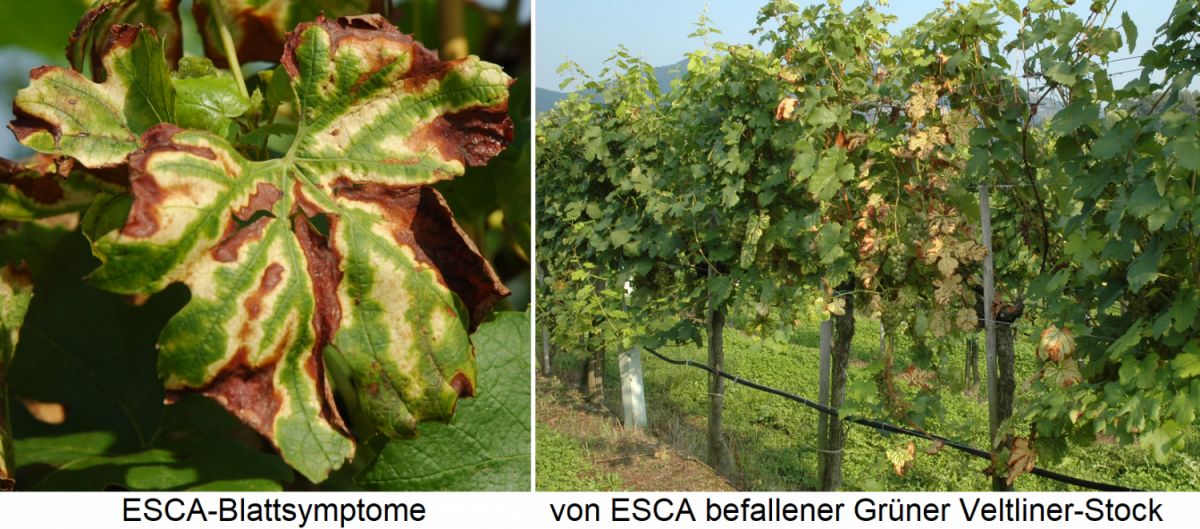This vine disease was already known to the Romans and others in antiquity. The name is derived from the Greek "yska", which means "rotten wood". It occurs mainly in warmer regions such as France, Italy and California. According to current knowledge, the fungi Phaeoacremonium, Fomitiporia punctata, Phellinus igniarius and Stereum hirsutum are involved. The former species also seems to be the cause of Petri's disease. This appears to be the precursor of Esca, which is why it is also called Young Esca. The complicated disease complex causes apoplexy, i.e. the sudden death of vines or at least parts of them, within a few years.
The exact cause has not yet been completely clarified. Esca disease mainly occurs on older vines. Presumably, the fungus penetrates injuries caused by pruning, the wood-forming tissue (lignin) is decomposed by toxins and the sap circulation of the plant is impaired. As a result, dead wood zones form that are characteristically white in the centre (hence white rot). In midsummer, individual, irregularly distributed, yellowish spots begin to appear on older leaves between the leaf veins, which rapidly enlarge and necrotise from the centre. The right picture shows a vine damaged by Esca, the left picture shows the typical leaf symptom.

The flaming reddish-brown necroses (discolourations) merge into one another and quickly spread over a large area between the leaf veins. The symptoms are initially reminiscent of those of red blight. The berries turn purple, shrivel up and taste bitter. Unfortunately, the symptoms of the disease only appear at an advanced stage. Direct control after an infestation is not yet possible. The best and safest measure to protect the vines from Esca (and also from the similar wood disease eutypiosis) is to prevent wood-destroying fungi from entering the wood as much as possible. Large cuts must be sealed with a wound sealing agent.
The diseased wood must be rigorously cut back to healthy wood. Perennial wood of diseased canes must be removed from the vineyard and burnt. Esca was last active in Europe on a large scale in the 1950s, but appears to be on the increase again recently. At the beginning of 2002, specialists from the Freiburg Viticultural Institute reported that about 2.5 percent of the areas in Baden-Württemberg were infested, but in some vineyards even up to 40 percent. See also under Fungi and a list of all diseases under Vine Enemies.
Images: by Bauer Karl - Own work, CC BY 3.0 at, link and link
Voices of our members

The Wine lexicon helps me to keep up to date and refresh my knowledge. Thank you for this Lexicon that will never end in terms of topicality! That's what makes it so exciting to come back often.
Thorsten Rahn
Restaurantleiter, Sommelier, Weindozent und Autor; Dresden